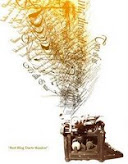Gustav Klimt was born in Austria to a poor, immigrant gold engraver. Klimt’s brother became a gold engraver like his father and Klimt began his career paintings murals and ceilings in buildings. His decorations and ornamentations grew in popularity and he remained in steady work. He would continue to develop his style of ornamentation throughout his life and it would become increasingly organic looking, in the Art Nouveau style. When Klimt was 30 both his father and his brother died and he had to provide for their families as well as for himself.
As Klimt dealt with the loss of his father and brother, his personal style of painting began to change. No longer did he want to paint straight-forward, historical pictures. He wanted to symbolically explore themes of psychology and he wanted to paint more pictures of women. He was very interested in the human body, particularly the female body. Five years after the deaths, in 1897, Klimt joined the emerging Vienna Secessionists and even acted as president for a time.
During his years with the Vienna Secessionists, Klimt did paint many images of women. He also painted landscapes like the one shown below, Houses on Unteracht on Attersee Lake. In the 1890s he began taking yearly vacations to the Austrian lake, Attersee, with a female of his acquaintance and her family. It was this area that inspired his landscapes.
 Beginning in 1894, Klimt’s work grew increasingly controversial. He took a few commissions for public works and did not produce what the patron or public felt was appropriate to be displayed. For example, three of these works showed Philosophy, Medicine, and Jurisprudence as nude women. After this, Klimt stopped taking public commissions.
Beginning in 1894, Klimt’s work grew increasingly controversial. He took a few commissions for public works and did not produce what the patron or public felt was appropriate to be displayed. For example, three of these works showed Philosophy, Medicine, and Jurisprudence as nude women. After this, Klimt stopped taking public commissions.
 In 1908 Klimt left the Vienna Secession movement and his art moved into a new phase. It was marked by widespread use of gold leaf. These are the paintings most people are familiar with, including The Kiss, shown above. As was always the case, Klimt worked slowly and carefully on each painting. This began even more important in this late phase because he had to apply tiny bits of gold leaf to his paintings.
In 1908 Klimt left the Vienna Secession movement and his art moved into a new phase. It was marked by widespread use of gold leaf. These are the paintings most people are familiar with, including The Kiss, shown above. As was always the case, Klimt worked slowly and carefully on each painting. This began even more important in this late phase because he had to apply tiny bits of gold leaf to his paintings.
 One final interesting fact about Klimt is that his Adele Bloch-Bauer I (shown above) sold in 2006 at auction for more money than any other painting ever had before: $135 million!
One final interesting fact about Klimt is that his Adele Bloch-Bauer I (shown above) sold in 2006 at auction for more money than any other painting ever had before: $135 million!
Return to main page.
As Klimt dealt with the loss of his father and brother, his personal style of painting began to change. No longer did he want to paint straight-forward, historical pictures. He wanted to symbolically explore themes of psychology and he wanted to paint more pictures of women. He was very interested in the human body, particularly the female body. Five years after the deaths, in 1897, Klimt joined the emerging Vienna Secessionists and even acted as president for a time.
During his years with the Vienna Secessionists, Klimt did paint many images of women. He also painted landscapes like the one shown below, Houses on Unteracht on Attersee Lake. In the 1890s he began taking yearly vacations to the Austrian lake, Attersee, with a female of his acquaintance and her family. It was this area that inspired his landscapes.
 Beginning in 1894, Klimt’s work grew increasingly controversial. He took a few commissions for public works and did not produce what the patron or public felt was appropriate to be displayed. For example, three of these works showed Philosophy, Medicine, and Jurisprudence as nude women. After this, Klimt stopped taking public commissions.
Beginning in 1894, Klimt’s work grew increasingly controversial. He took a few commissions for public works and did not produce what the patron or public felt was appropriate to be displayed. For example, three of these works showed Philosophy, Medicine, and Jurisprudence as nude women. After this, Klimt stopped taking public commissions. In 1908 Klimt left the Vienna Secession movement and his art moved into a new phase. It was marked by widespread use of gold leaf. These are the paintings most people are familiar with, including The Kiss, shown above. As was always the case, Klimt worked slowly and carefully on each painting. This began even more important in this late phase because he had to apply tiny bits of gold leaf to his paintings.
In 1908 Klimt left the Vienna Secession movement and his art moved into a new phase. It was marked by widespread use of gold leaf. These are the paintings most people are familiar with, including The Kiss, shown above. As was always the case, Klimt worked slowly and carefully on each painting. This began even more important in this late phase because he had to apply tiny bits of gold leaf to his paintings. One final interesting fact about Klimt is that his Adele Bloch-Bauer I (shown above) sold in 2006 at auction for more money than any other painting ever had before: $135 million!
One final interesting fact about Klimt is that his Adele Bloch-Bauer I (shown above) sold in 2006 at auction for more money than any other painting ever had before: $135 million!Return to main page.








10 comments:
eventually somethimg that doesn't focus on the nudes
I like the kids to have access to the background as well as the art
really well done
It's certainly a challenge to show some of these artists in kid-friendly ways!
Thanks for stopping by.
i did not find this site very helpful for my homework!!
If you tell me what you're looking for, maybe I can help you. I'd be happy to try.
this has really helped with my hw thnx
this has realy helped with my hw thnx
i think i have spotted a mistake....
Klimt’s brother became a gold engraver like his father and Klimt began his career paintings murals and ceilings in buildings. isn't it meant to be painting instead of paintings??
Thanks but i didnt have the info i was looking for. Good sight though, with loads interesting facts! :)
this website hasn't really helped me wid my homework i didn't get all da info i needed 2 help me wid my h/m
Where can I find info. on Klimt's children legitimant and illegitimant
Post a Comment